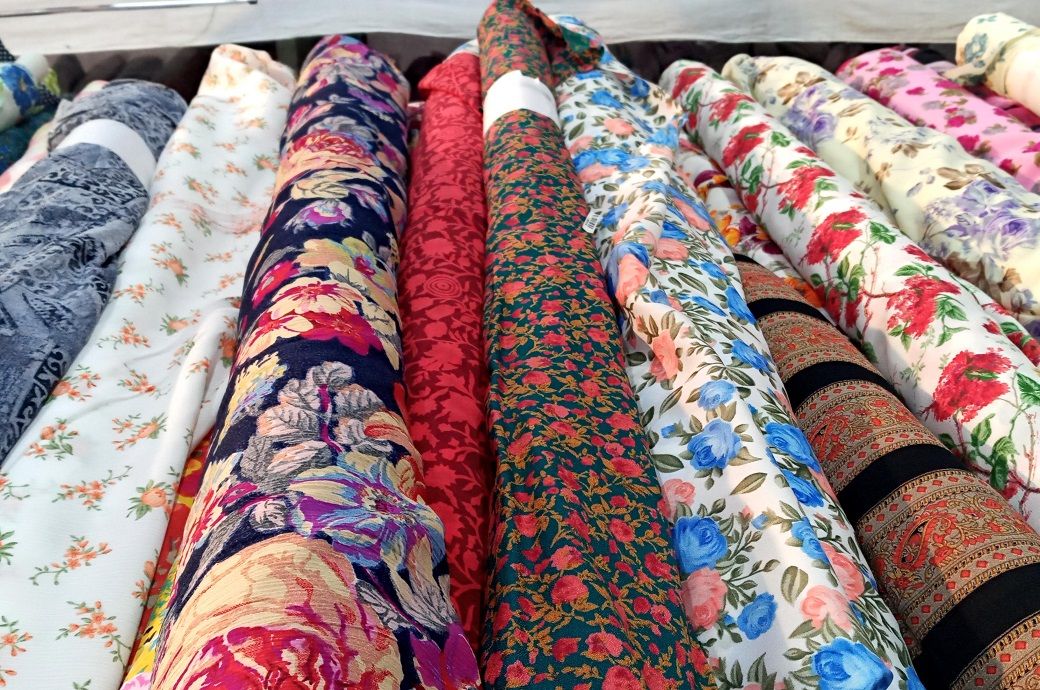
Today, Surat stands tall at the forefront of innovation and production excellence.
“Surat remains a prominent textile hub. Despite periodic fluctuations, it has been able to hold a strong position in the global and domestic markets,” said a fabric manufacturer to Fibre2Fashion even as another industry voice added: “Surat stands distinguished by its remarkable diversity of fabric offerings, earning it a unique position in the textile value chain.”
Facts strongly back such claims. Today, Surat’s textile production spans a broad spectrum, from basic daily-wear fabrics to premium, high-end specialty textiles. This extensive range has positioned the city as a one-stop sourcing destination for stakeholders at home and abroad, further solidifying its position.
With more than 650,000 power looms in operation and an estimated daily fabric output of around 40 million meters as per reports, Surat stands apart due to its robust ecosystem. The city’s strengths lie in its skilled workforce, well-integrated infrastructure, deeply ingrained production culture, and the enterprising spirit that drives the local industry.
Adding momentum are Surat’s dedicated textile parks and industrial estates located in areas such as Pandesara, Sachin, and Katargam. These regions host the power loom clusters and advanced processing units equipped with modern infrastructure, including common effluent treatment plants and continuous power supply, providing Surat with a clear operational edge.
Also, Surat’s proximity to Hazira Port, coupled with well-developed road and rail networks, facilitates efficient and cost-effective shipments to international markets. Expectedly so, the city currently exports to nearly 60 destinations, including the UK, UAE, US, countries in Latin America, and Central Asia—all of which exhibit strong appetite for Surat’s unique range of offerings.
It may be mentioned here Surat’s rise in the textile landscape dates to colonial era when the British East India Company recognised its strategic location and established it as a key trade port. Post-independence, especially after the economic liberalisation of the 1990s, Surat capitalised on its cost-effective manufacturing base and abundant labour—standing at around 4.5 million today as per some estimates—to reaffirm its position as the epicentre of India’s synthetic textile industry.
The synthetic fabric segment is diverse and technically advanced. Manufacturers in Surat utilise innovative processing methods to ensure that synthetic textiles exhibit excellent colour retention, wrinkle resistance, and structural durability, even after repeated use.
Beyond sheer production volume, Surat is recognised for its high-quality manufacturing capabilities. The city’s textile ecosystem is notably vertically integrated enabling greater quality control and operational efficiency.
“There is a promising trend towards vertical integration within the industry, which is very healthy. This shift allows companies to control diverse aspects of their production process, from raw material to final product,” said Sumeet Sharma, director - sales, Sun Textile Engineers, in an earlier conversation with Fibre2Fashion.
He further emphasised how vertical integration can boost profitability.
Such strategic moves signal substantial growth potential for Surat’s textile sector, felt Sumeet even as he added government support remains key to sustaining Surat’s growth trajectory as a textile hub while highlighting the importance of targeted policies and initiatives, which can provide the necessary framework for infrastructure development, technology upgrades, and skill enhancement, essential to maintain competitiveness in domestic and global arenas.
Meanwhile, with technology emerging the key driver of progress, Surat’s textile sector has actively embraced innovation to boost productivity and expand capabilities. The advent of state-of-the-art digital printing has revolutionised fabric design by enabling the creation of photorealistic images and intricate colour gradients.
Similarly, advanced jacquard looms have elevated weaving capabilities, allowing for the production of complex textured patterns while latest computerised embroidery systems have enabled execution of intricate designs with exceptional precision.
However, the shortage of technically skilled manpower sometimes poses a challenge, affecting the efficient utilisation of technology, felt a renowned Surat-based technology provider, which specialises in Computer to Screen (CTS) and eco-friendly solutions.
The entity concerned thus offers training facility to its clients, as per requirement.
The industry is also responding fast to the evolving environmental dynamics by implementing wide-ranging sustainability initiatives.
“With a strong presence in the global and domestic market, we are committed to expanding our footprint and capabilities…Our growth strategy centres around quality, with the principal aim to solidify our position as a premier provider of yarns and cords with the overarching goal to cater to the evolving needs of our clients, upholding the principles of sustainability and social responsibility,” said Chitrang J Jariwala, founder of Fabcord International, in a previous interaction.
Backed strongly by the concerned stakeholders, the industry players are increasingly adopting diverse sustainability practices, including implementation of innovative water-conserving technologies in dyeing, and finishing processes, use of recycled fibres, solar energy, etc.
“Our primary goal is to drive sustainability while also cutting operational costs,” claimed Aditya Desai, chief technology officer at Valiant Entech Limited, in a discussion with Fibre2Fashion earlier.
Valiant’s R.E.G.A.L. (Free Radical Enhancement using Gas Assisted Liquid Dispersion) solution utilises a combination of ultrasound and nanobubble mechanisms to deliver efficient outcomes across applications such as textile processing, wastewater treatment, and commercial laundries.
Even as Surat continues to evolve in every facet of textile manufacturing, reports of a probable deal with US, further adds to the cautious optimism of the industry players.
A US delegation is expected to visit India soon for the next round of negotiations as both the countries rush to work things out before the tariff deadline, claimed some media reports.
“Nearly 28 per cent of India’s total textile exports are directed to the US, and more than 60 per cent of the country’s manmade fibre (MMF) production comes from Surat and surrounding industrial hubs. This will bode well for Surat,” underlined an industry representative to conclude on a positive note but not before adding local businesses are nonetheless aware that global trade partnerships come with shifting dynamics and Surat’s response is not just about capitalising on potential gains, but strengthening its position through innovation and adaptability to prevail in a competitive global environment.
ALCHEMPro News Desk (DR)
Receive daily prices and market insights straight to your inbox. Subscribe to AlchemPro Weekly!